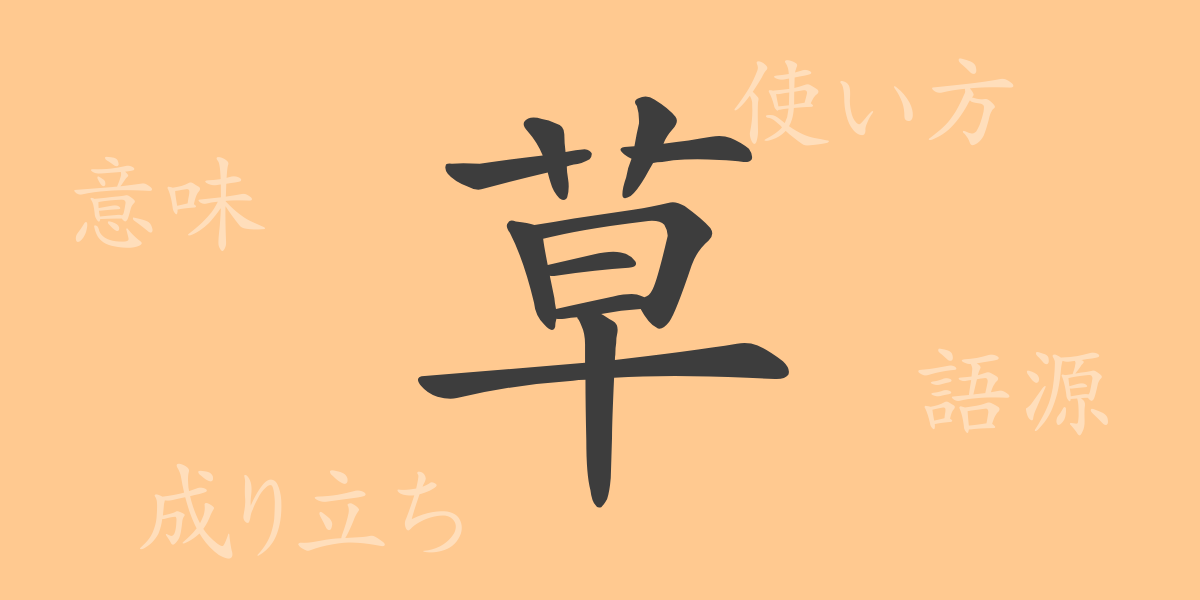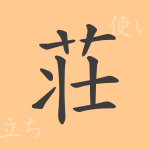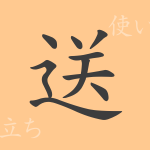The Kanji “草” (くさ – ソウ) deeply ingrained in Japanese text culture, symbolizes nature’s greenery and is intricately linked to people’s lives. This article delves into the history and meanings embedded in the Kanji “草” (くさ – ソウ), exploring how it integrates into our language. We will uncover the profound nuances of “草” (くさ – ソウ), from its origins to idioms and proverbs.
Origins of 草 (くさ – ソウ)
The Kanji “草” (くさ – ソウ) evolved from ancient Chinese pictographs, originally depicting lush vegetation. Its curved lines symbolize the stems and leaves of grass, reflecting the vitality and breath of nature. Over time, it has come to generally denote grasslands and wild grasses.
Meaning and Usage of 草 (くさ – ソウ)
“草” (くさ – ソウ) primarily refers to a type of plant and is widely used in contexts describing meadows or grasslands. It is also employed metaphorically, as in “草の根” (くさのね – grassroots), referring to the foundational or populous layers of a region.
Readings, Stroke Count, and Radical of 草 (くさ – ソウ)
The Kanji “草” (くさ – ソウ) carries various pieces of information which enhance understanding:
- Readings: On’yomi “ソウ” (ソウ), Kun’yomi “くさ” (くさ)
- Stroke Count: 9 strokes total
- Radical: Grass radical (艸 – くさかんむり)
Idioms, Phrases, and Proverbs Using 草 (くさ – ソウ) and Their Meanings
There are many idioms and phrases that include “草” (くさ – ソウ), each with significant meanings:
- 草木皆兵 (そうもくかいへい) – A psychological state where even harmless things seem threatening.
- 草の根 (くさのね) – Refers to local or grassroots communities.
- 草を分ける (くさをわける) – To speak well of someone.
- 草の葉一枚 (くさのはいちまい) – Describes a very small amount.
Summary on 草 (くさ – ソウ)
The Kanji “草” (くさ – ソウ), with its shape and meanings tied closely to the natural world, is used in diverse expressions within Japanese. The presence of “草” (くさ – ソウ) in our environment and culture enriches the imagery through language. Through this article, we hope you have gained an appreciation for the rich background of “草” (くさ – ソウ).

























